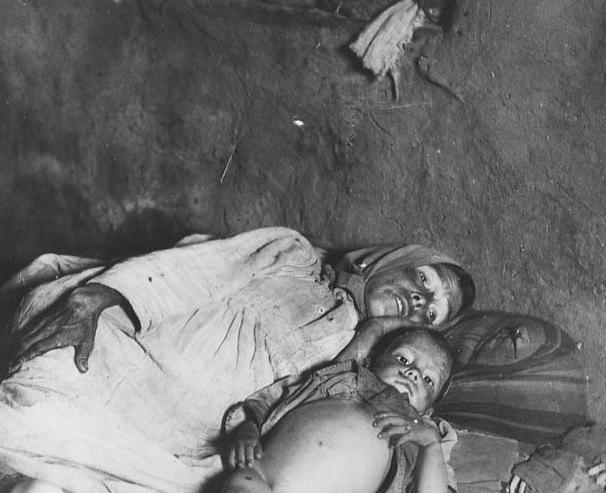
Russian Civil War: Food Shortages (1919-22)

Figure 1.-- Scenes like this is what the American Relief Mission found when they finally were allowed into Russia by the Bolsheviks (1921). American officials offered to come in 2 years ealier when the famine began. Bolshevik officials did not, however, admit to their mismanagement and demanded to control the distribution of the food so it could be used as a weapon. This mother and child were found in Samara on the Volga, a major Russian city south of Volgagrad, the southeastern area of European Russia in 1921. (At the time it was the central part European area of the Soviet Union which included the Ukraine.) The name of Samara was changed to Kuybyshev (1935). Kuybyshev was the city chosen by Stalin as a war time capital when it looked like Moscow would fall to the Whermacht. Source: American Relief Mission.
|
|
Food shortages by the end of World War I were widespread and growing. This was a problem which began during World War I. The coscription of farm laborers and disruptions in the economy and heavily burned transport system (primarily the rails) adversely affected agricultural production. And German advances meant that important agricultural areas fll into the hands of the Central Powers, especially in 1917. This at first affected primarily workers in the city. And it was food riots in the cities that more than anything led to the Revolution. Not only had agricultural production declined, but the peasants were unwilling to sell their harvest for paper money which was essentially worthless. The distribution of essential commodities virtually broke down. The country's transportation system was badly damaged by the fighting, further complicating the food situation. Food shortages gradually spread to rural areas. Land owners fled their estates or were killed, this disrupted farm management. Peasants seized the land. This adversely affected immediate production as the nomal harvest and marketing system broke down. This is because of the fighting was no longer confined to a distant and defined front line, but occurred in many areas throughout the former Russian Empire. Combatant forces as they passed through rural areas would seize food from the peasants. This both left peasants without food, but disrupted both planting and harvesting. And they would use food as a weapon against the other side, including areas believed to support the other side. The American Relief Mission which came to Russia to provide food to the starving had a great deal of problems with Bolshevik officials intent on using food as a weapon and even denying transport for relief supplies. Famine was not unknow to Russia, but by 1919, perhaps one of the worst famines in Russian history was developing and deaths of tens of millions was possible.
CIH

Navigate the Children in History Page:
[Return to Main Russian Revolution famine page]
[Return to Main Russian Civil War page]
[Return to Main Russian Revolution page]
[Return to Main Herbert Hooverv World War I page]
[Return to Main Soviet communism page]
[Introduction]
[Biographies]
[Chronology]
[Climatology]
[Clothing]
[Disease and Health]
[Economics]
[Geography]
[History]
[Human Nature]
[Law]
[Nationalism]
[Presidents]
[Religion]
[Royalty]
[Science]
[Social Class]
[Bibliographies]
[Contributions]
[FAQs]
[Glossaries]
[Images]
[Links]
[Registration]
[Tools]
[Children in History Home]
Created: 7:06 PM 4/14/2014
Last updated: 7:06 PM 4/14/2014



